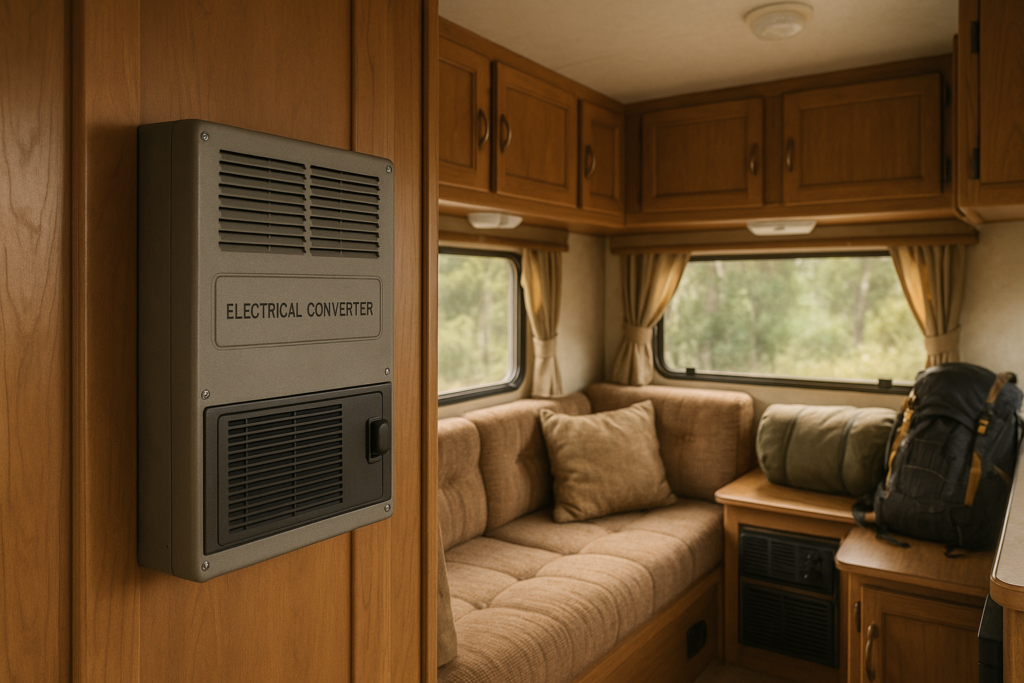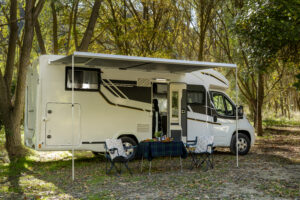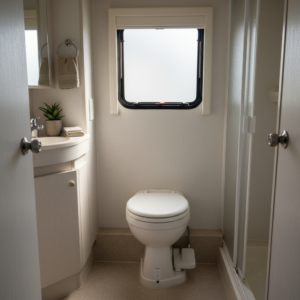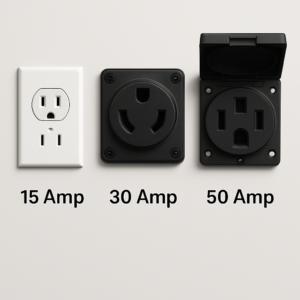
RV Converter Issues: Troubleshooting And Maintenance Tips
Table of Contents
Your RV’s electrical system is the quiet backbone of daily comfort on the road. It keeps the fridge cold, the lights bright, the fans running, and the batteries charged. When it’s working, you hardly think about it. When it fails, though, you’ll notice quickly because your lights dim, your water pump slows, or worse, your fridge shuts down on a hot day.
Among the most common culprits are RV converter issues. Because converters and inverters are central to how an RV manages power, problems here can ripple through the entire electrical system. Understanding what these devices do, spotting early warning signs, and knowing how to troubleshoot them safely can be the difference between a quick fix and a ruined trip.
What Is an RV Converter?
An RV’s electrical system is a hybrid. You’ve got AC power (the 120V electricity that runs things like microwaves, air conditioners, and outlets) and DC power (the 12V system that runs lights, fans, the water pump, and powers your control panels).
The RV converter is the bridge between the two. When you’re plugged into shore power or running a generator, the converter takes that incoming AC power and “steps it down” into usable DC power. At the same time, it charges your RV’s batteries, so they don’t drain while you’re parked.
There are three basic types of RV converters:
- Integrated converters – Built into the power center with fuses located in the power center.
- Deck-mounted converters – Typically mounted behind the power center, with fuses located directly on the converter.
- Inverter/chargers – Common in some motorhomes, combining the functions of a converter with an inverter. These are usually installed remotely in the RV and have their own circuit protection.
Without a working converter, your 12V systems will falter, even if you’re connected to shore power. That’s why RV converter problems are such a big deal: a bad converter can sideline your entire RV.
Symptoms of RV Converter Issues
Converters rarely fail without warning. Instead, they show signs that something’s not right. Pay attention to these common symptoms:
- 12V appliances stop working even when plugged into shore power – lights won’t turn on, or the water pump won’t run.
- Lights dim or flicker, giving an early sign of low DC output.
- Fans run slow or appliances act weak, showing reduced power supply.
- You hear buzzing or humming noises; some sounds are normal, but loud or irregular noises suggest the converter is under strain.
- The converter overheats and becomes hot to the touch or trips its cooling fan constantly.
If you notice one or more of these, it’s time for some RV converter troubleshooting before the issue turns into a trip-ending breakdown.
Step-by-Step Troubleshooting Guide for RV Converter Issues
Troubleshooting an RV converter is about working through a clear process that rules out simple problems before you start worrying about major failures. You want to start with the obvious suspects (like weak batteries or blown fuses) before tearing into wiring or replacing the converter altogether.
The steps below will walk you through a logical order of checks, starting with safety and ending with deeper inspections.
Safety First
Working with electricity in an RV can be dangerous. Always:
- Disconnect from shore or generator power before opening anything.
- Wear insulated gloves and eye protection.
- Use the right tools, a quality multimeter, screwdriver set, and flashlight at least.
Test Battery Health
Before blaming the converter, rule out battery problems.
- With all power off, measure battery voltage with a multimeter.
- Healthy batteries should read between 12.3V and 12.9V when resting.
- If the voltage is low, recharge them and retest. Sometimes what looks like a converter issue is just a weak or aging battery.
Measure Converter Output
Now test the converter itself:
- Disconnect the battery cables.
- Reconnect the RV to shore power or generator.
- Measure the converter’s DC output at its terminals.
- A good converter should read 13.6V to 14.4V. Anything lower, and you may have an RV converter not charging battery issue.
Inspect Fuses and Reverse Polarity Protection
Converters are protected by fuses – sometimes inline, sometimes built into the unit.
- Check for blown fuses or tripped breakers and replace them with the correct size.
- Many converters have a reverse polarity fuse that trips if battery cables are connected backwards at any point. Replace it if needed.
Examine Wiring and Connections
Loose or corroded wiring can mimic converter failure.
- Inspect all connections between the converter, battery, and fuse panel.
- Look for melted insulation, discoloration, or a burnt smell. These are all signs of overheating.
- Clean corrosion with a baking soda solution and retighten connections.
Evaluate Cooling and Ventilation
Converters generate heat. If they can’t cool properly, they’ll shut down.
- Make sure the cooling fan kicks on when the unit heats up.
- If the fan is silent, you may have an RV converter cooling fan failure.
- Ensure the area around the converter has good airflow; don’t block it with stored gear.
Other Electrical Troubles That Can Mimic Converter Issues
Not every power issue is caused by the converter. Check for these common culprits before assuming RV converter issues:
- Blown Fuses or Tripped Breakers: A simple $2 fuse can mimic a $200 converter failure.
- Faulty GFCI Outlets: If they trip, parts of your RV’s electrical system shut down. Always reset and test them.
- Wiring Problems: Loose connections, corrosion, or even rodent damage can interrupt power flow.
- Grounding Faults: Poor grounding can cause flickering lights, buzzing, or erratic electrical behavior.
- Battery-Related Issues: Old or weak batteries that no longer hold a charge, or batteries with the wrong type or capacity, can mimic converter failure.
This is why RV electrical troubleshooting often feels like detective work. Sometimes the converter is guilty, and sometimes it’s just the easiest suspect.
When to Troubleshoot Yourself vs. Call a Pro
A lot of RV converter issues can be diagnosed with a multimeter and a little patience. If you’ve confirmed battery health, measured converter output, checked fuses, and inspected wiring, you can solve many problems yourself.
But there are times when it’s safer (and smarter) to stop and call a professional:
- You notice burning smells, smoke, or melted wiring.
- Your converter keeps tripping breakers or overheating despite proper ventilation.
- You’ve replaced fuses, tested voltage, and still can’t find the issue.
That’s where Good Sam RV ProCare comes in. With a nationwide mobile RV service network, certified technicians can come directly to you – whether you’re parked at a California campground, wintering in Florida, or on the road in North Carolina. They specialize in diagnosing tricky RV electrical system problems and making sure your rig is safe and road-ready.
Preventive Maintenance Tips
Catching issues early and staying ahead of wear can extend the life of your RV converter:
- Keep connections clean and tight. Corrosion is the enemy of a steady power flow.
- Test your batteries regularly and ensure you replace them when they no longer hold a charge.
- Ensure proper ventilation by not letting dust, dirt, or clutter block the converter’s airflow.
- Carry spare fuses and a basic toolkit for small fixes on the road. They can save a trip.
- Inspect seasonally. Take a few minutes before each trip to check the converter for dust buildup, loose wires, or unusual noise.
Conclusion
A failing RV converter can turn a great trip into a stressful experience, but it doesn’t have to. By understanding how converters work, spotting the early warning signs, and following some simple troubleshooting steps, you can often identify and resolve the problem before it snowballs.
Remember:
- Test your batteries first.
- Measure converter output.
- Inspect fuses, wiring, and ventilation.
Still having trouble? Good Sam RV ProCare is ready to step in with expert mobile RV electrical support so your RV stays safe, reliable, and ready for stress-free travel.
Frequently Asked Questions (FAQs)
What is the difference between an RV converter and an inverter?
A converter changes 120V AC power into 12V DC to run lights, fans, and charge batteries. An inverter does the opposite: it converts 12V DC from your batteries into 120V AC, so you can run appliances like a coffee maker or TV when you’re not plugged into shore power.
What happens when the RV converter goes bad?
Your 12V systems stop working properly. Lights dim, the water pump slows, and your batteries stop charging, even when you’re plugged in.
Can a dead battery look like a converter failure?
Yes. A dead or weak battery can mimic converter issues. Always check battery voltage before assuming converter failure.
What should I do if the converter is overheating or the fan isn’t working?
First, make sure the converter has proper airflow. If the fan has failed, it may need replacement. Persistent overheating should be handled by a professional, as it can signal deeper electrical faults.
How long should an RV converter last?
Typically 5–10 years, depending on use, maintenance, and environmental conditions. Regular cleaning and good ventilation extend its lifespan.
Can you reset an RV converter?
Most converters don’t have a “reset” button. Instead, you’ll need to check and replace fuses or breakers in the power center to restore proper function.
Will an RV work without a converter?
Not for long. Without a converter, your 12V systems will run only until the batteries drain. Once they’re empty, you’ll lose lights, fans, and essential functions until the converter is repaired or replaced.


